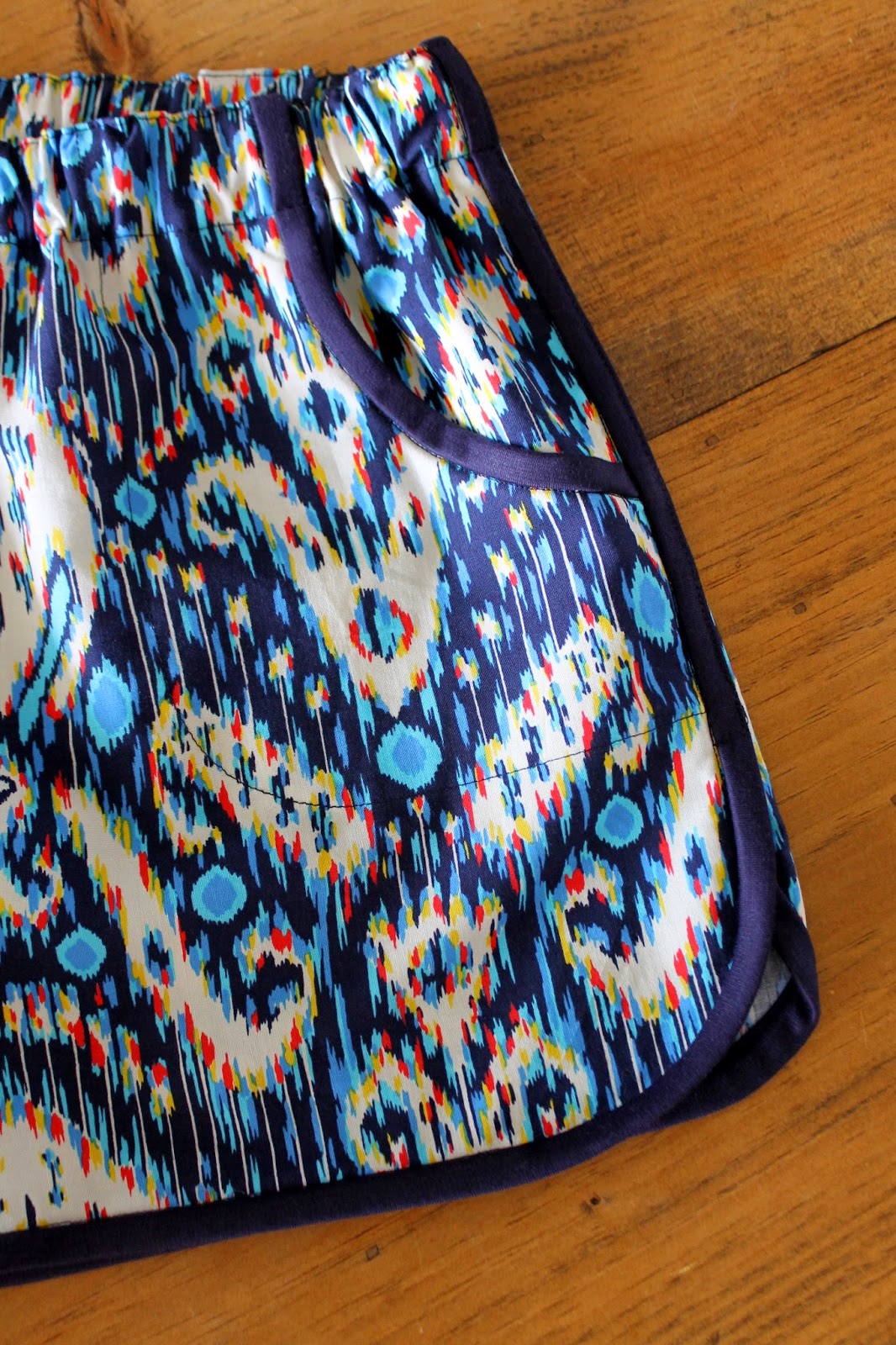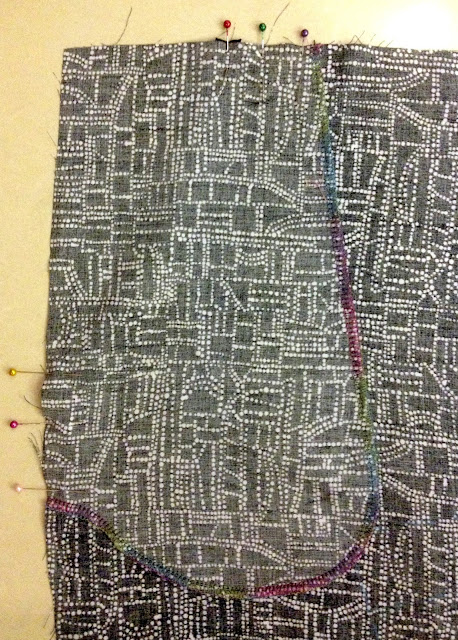When I make pants that have a slash style pocket, I tend to like to make it a one-layer pocket to reduce bulk in my hip/thigh area. I've used this type of pocket many times, including on my recent McCall's 6083 jumpsuit, two pairs of Hudson pants (cropped and chambray), my two Bettines (rayon and lawn), Tim's Juba shorts, and my Ilsley skirt. I had some requests for an explanation of what I mean when I say "one-layer pocket," so I made a tutorial. A very, um, rustic tutorial, but hopefully it explains what I'm talking about!
I model my one-layer pockets after the pockets in the Prefontaine Shorts by Made with Moxie. The pocket is sewn/top-stitched directly to the pant leg, so the stitching is visible on the outside of the pant, which may not work for more formal styles, but is totally fine for casual styles. Here's the pocket on my panda Prefontaine Shorts:
And on the pair I made for my sister:
Depending on the busy-ness of the fabric and the color of the thread the stitching line can be obvious (like on the shorts above), whereas on others you can barely see it, like on my chambray Hudsons:
And my Bettine:
Okay: the tutorial!
Please forgive the crappy phone photos. Apparently tutorial-making is not my strong suit!
1. Your pattern likely has two pocket pieces. Keep the one shaped like this and cut out from your main fabric:
Set this one aside; we won't be using it:
2. Finish the curved edge of your pocket piece. I serged/overlocked mine:
3. Finish the pocket edge of your front pant legs. I used single-fold bias tape to finish mine (sew the tape to the pocket edge, right side to right side, then flip it inside and topstitch... more info on bias tape facings here at Grainline Studios), but you could used double-fold bias tape as a binding (like on the Prefontaine shorts), or maybe even double turn the edge to the inside, if it's straight enough that you can get away with it.
4. Lay your pocket piece on top of your front pant leg piece, right side of the pocket piece to wrong side of the pant leg piece. There may be markings on your pattern pieces to help line them up at the top and sides. Baste the top and sides (where the two sets of pins are in the photo below):
5. Making sure the pocket piece is flat against the pant leg front, pin the curved edge of the pocket piece to pant front:
6. Topstitch the curved edge (I used my serged stitches as my guidline for sewing):
7. You're done with your one-layer pocket! Keep sewing your pants or skirt as instructed...
On my jumpsuit, you can barely see the pocket:













